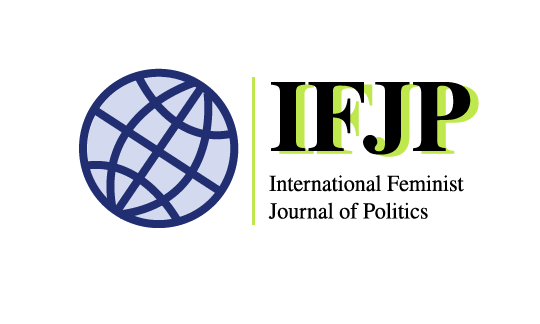Colombia’s “gender-focused” peace accords are great – but feminists’ ideas for peace are even better
by
Colombia’s 2016 peace agreements between the government and the FARC-EP guerrillas are the most progressive in history in terms of their inclusion of women. The accords pay special attention to violence suffered by women in the armed conflict, use gender-inclusive language, encourage women’s political participation, and guarantee land rights. But feminist peace organizations in Colombia envision an even more comprehensive peace – one that focuses not only on the inclusion of women, but on tackling some of the deep roots of Colombia’s conflict that the peace accords leave untouched. These include deep-seated patriarchy, militarism, and free market hegemony.
A comprehensive peace?
Women celebrate the signing of a historic ceasefire deal between the Colombian government and FARC rebels in Bogota, Colombia, on June 23, 2016. (John Vizcaino/Reuters)
I spoke to women activists in Colombia while the peace negotiations were ongoing, interviewing participants in the Colombian Caribbean Women’s Network on the Caribbean coast, the Women’s Social Movement Against War and for Peace in the Middle Magdalena valley, and the Pacific Route of Women in Cauca department. Every activist discussed her understanding of what peace would mean, and whether it differed from the peace being negotiated between the government and the FARC.
Women’s advocacy during Colombia’s peace talks pushed both sides to appoint more women to their negotiating teams, institute a gender sub-commission to review each provision of the accords, and eventually craft a groundbreaking document. Research shows that women’s inclusion in peace negotiations tends to result in more durable accords, especially when those women are part of collective organizations. This is due in part to the embeddedness of women’s organizations in civil society and their consequent exposure to the needs and interests of multiple sectors. While women’s activism did eventually succeed in enabling higher levels of involvement than other negotiations, the accords left intact several of the underlying foundations of conflict, and the women I interviewed called attention to three of these.
First, the accords do not address the militarization of Colombian life. Women’s organizations have called attention to this process over the course of the armed conflict: the preponderance of military bases, the harms generated by the presence of U.S. forces, militarized solutions to social problems, and the “trickle-down” violence that spreads to surrounding communities and private homes. The Duque administration seems poised to double down on military solutions, not transform them.
Second, the peace accords assume the country’s reigning economic model of a peace driven by foreign investment and the extraction of mineral resources and monocrops. Colombia’s increasingly rosy reputation over the last decade has made it an attractive destination for tourists and the extractive industry. While the government narrates this as an economic miracle, a comeback story of failing-state-turned-economic-bonanza, extractivists partner with paramilitaries to threaten and displace rural communities, leaving environmental and social degradation in their wake. The effects are particularly grave for women, Afro-Colombian, and indigenous communities. In addition to displacement, women in these communities suffer economic precarity, food insecurity, financial dependence, labor informalization, and increased burdens of care work as a result of extractive priorities.
Third, while the 2016 accords offer notable opportunities for women’s inclusion, they fail to deeply interrogate gendered structures of power. Feminists see violence not as an exceptional event, but as part of a continuum stretching from acts of war to quotidian misogyny.
It is not enough to demobilize an armed group or end direct combat; the entire war system must be deconstructed, which means, among other changes, a transformation of gender roles.
Nonetheless, even while the 2016 accords leave masculinities and masculinist cultural symbols largely untouched, post-conflict transitions offer an opportunity to institutionalize feminist goals. As women activists push for the implementation of the gendered provisions of the accords, they may be poised to take advantage of this opportunity.
Colombian feminisms: Watch this space!
Did the signing of peace accords open up a new space in political discourse for Colombian feminists to address these deep foundations of conflict? For many years, feminists and other activists were publically labeled, by anyone from paramilitaries to presidents, as complicit with the guerrilla. This made them vulnerable to threats and assassinations. With the guerrilla demobilized, one would hope these risks would be attenuated, but the battle over the implementation of the accords – particularly when it comes to land redistribution – has resulted in a new wave of assassinations of activists in Colombia.
Even while faced with violence, some women’s organizations are being vocal about their peace priorities. They are organizing summits and conferences aimed at drawing a map for a society at peace, built on the pillars of women’s emancipation, racial equity, demilitarization, and rolling up the red carpet that’s been laid out for mining and monocrop interests. Combined with new political interventions by women ex-combatants and a rising civilian left, the changed space of Colombian society portends a wave of feminist activism dedicated to using the imperfect peace accords as a powerful tool for social, political, and economic transformation.
Read the full article: What’s to Come is More Complicated: Feminist Visions of Peace in Colombia


